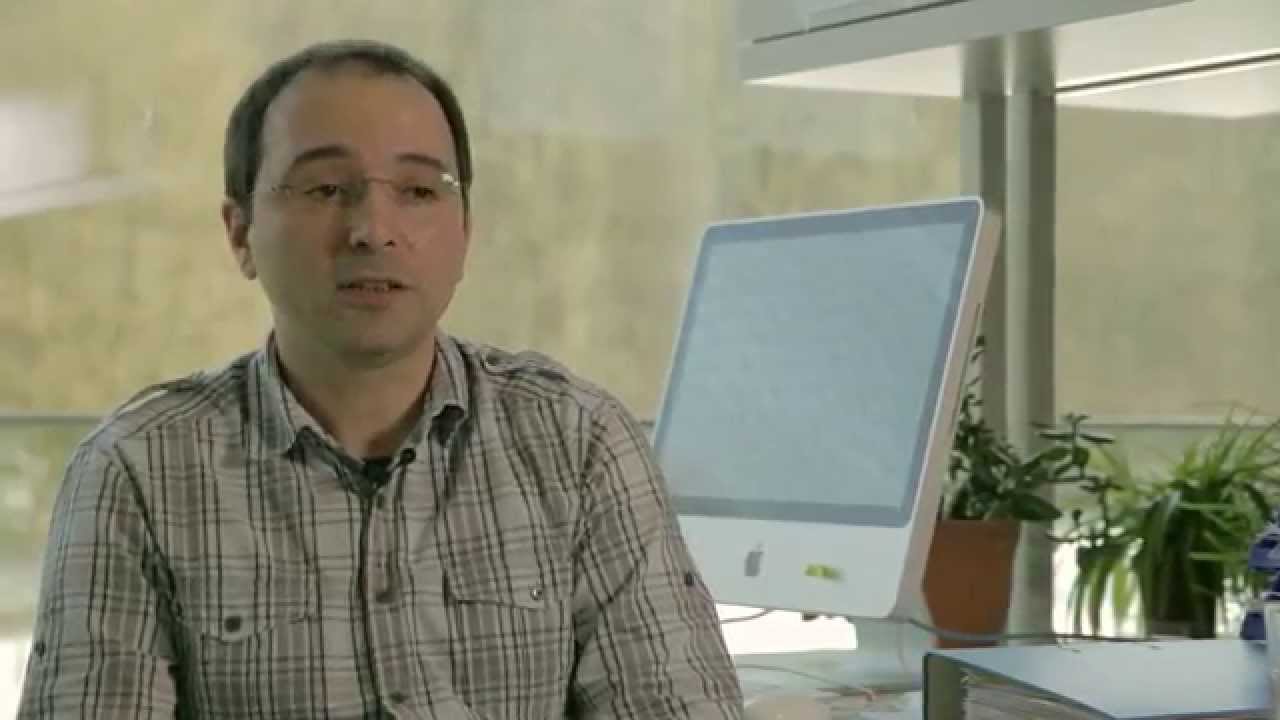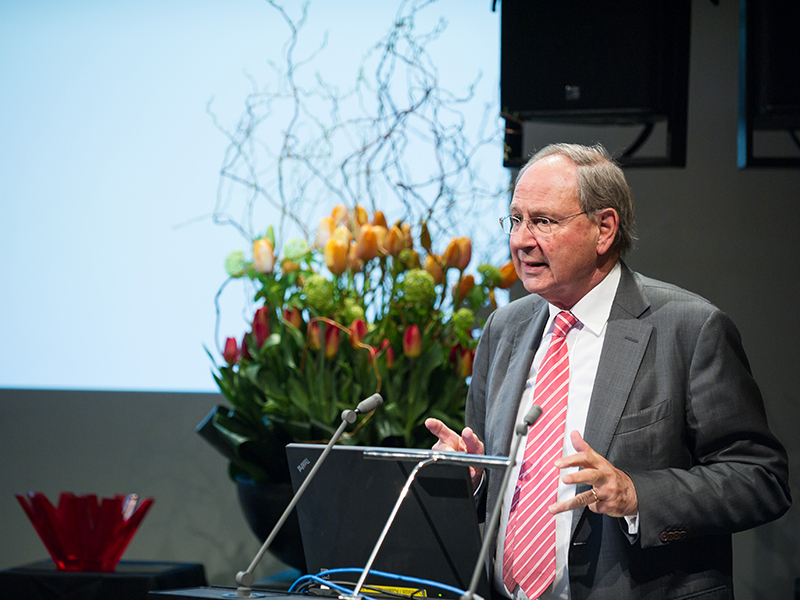Brilliant spark for personalised therapies
The 2015 Spark Award goes to a group of researchers led by ETH Professor Manfred Kopf, which has developed a method by which specific characteristics of immune cells can be identified. The technology could prove to be an important tool in personalised medicine.
A total of 145 inventions, 82 of which have been registered for patent approval: ETH Zurich researchers developed many brilliant ideas for new technologies in 2014. Every year, ETH nominates the technologies with the greatest commercial potential for the Spark Award. External judges and specialists from ETH transfer, ETH Zurich’s technology transfer unit, evaluate the inventions. Apart from the commercial potential also originality and patent strength are taken into account..
“Have you ever wondered what a spark is?” asked Detlef Günther, Vice President Research and Corporate Relations of ETH Zürich in his welcome speech at this year’s Spark Award ceremony. A spark is something that is really highly energetic, explained Günther, a charged particle that emits light. And that energy transfer typically starts from one single particle or from a group, and typically the strongest one. “Today we hope to find the most innovative particle or group of particles with the most innovative idea in this room.”
This year, ETH Professor Manfred Kopf and his colleagues Jan Kisielow and Franz-Josef Obermair receive the Spark Award for a new technology that allows large scale and simple characterisation of specific immune cells, called T-cells. “We hope our technology will be an important tool in many clinical areas, be it diagnostics or individualised therapies,” says Kisielow, a research associate at the Institute for Molecular Health Sciences.
Target search in high-throughput
T-cells carry specific receptors that recognise virus-infected or degenerate cells in the body so that they can render them harmless. When T-cells mature, countless variants with different receptors develop that recognise each other’s target structures (antigens). A complex immune selection process eliminates those T-cells that recognise the body’s healthy cells. Remaining is a battalion of T-cells with different receptors that match all kinds of extraneous and abnormal antigens. In autoimmune diseases, such as polyarthritis or multiple sclerosis, T-cells develop with receptors that incorrectly identify and attack healthy cells in the body.

The technology developed by Kopf, Kisielow and Obermair is a high-throughput method by which the antigens recognised by T-cells can be identified. A cell equipped with a light signal presents an antigen from a library of candidate molecules on its surface. If a T-cell with its receptor now binds to the presented molecule, the light signal is switched on and contact between the T-cell and the antigen is immediately reported. Through the light signal, the antigen can be picked out from the library and identified.
This invention could enable the development of customised therapies for patients. For example, if one knows the target peptide of the stray T-cells in an autoimmune disease, it may be possible to mask it in order to protect the healthy cells. It is also conceivable that the degenerate T-cells in the patient’s blood could be used as an indicator in the diagnosis of autoimmune diseases. In addition, T-cells found in close proximity to a tumour could provide insight into new tumour antigens, which may allow customised cancer immunotherapy.
Strong and long-lasting patents

Another highlight of the evening was the keynote talk by Luc Bonnard, Vice Chairman of the Board of Directors of the elevator and escalator company Schindler. The ETH alumnus, who also mentioned how valuable the education was that he received at ETH Zurich 40 years ago, spoke of the development of the Schindler Group’s strategy over time; and what part innovation played in this strategy. He stressed how essential it proved for the company’s success to rely on few but strong and long-lasting patents. And that the most durable innovations were driven by the customers.
In order to support its ingenious inventors in turning their idea into a product, ETH Zurich offers a variety of programs, from Pioneer Fellowships and the “Industry Day” to platforms and events for networking with experienced company founders. “This exchange is extremely valuable”, said Silvio Bonaccio, head of ETH transfer. ETH Zurich’s technology transfer unit offers not only coaching but also financial support with the Pioneer Fellowship Grant and the infrastructure to develop an idea further into a prototype. How much these efforts pay off becomes apparent in the remarkable and stable balance ETH has been drawing for years: Over 20 companies are being founded per year, of which over 90 percent survive the first five years.
Other finalists and their discoveries
Four other discoveries reached the finals of the selection process for the Spark Award. One of these, from a group led by ETH Professor Raffaele Mezzenga, is currently in the peer-review process of a research journal and due to confidentiality regulations cannot be described here. The other three finalists created the following ideas:
Fireproof wood: Wood is an important material, but poses a challenge in fire prevention. Various methods are used to make wood fireproof, but they all have disadvantages in terms of cost, environmental impact and material properties. ETH Professor Ingo Burgert and his co-workers Munish Chanana und Vivian Merk have now developed a simple and affordable method in which wood is impregnated by dipping it into two environmentally friendly solutions. The thus mineralised wood is less inflammable. (external pageVideocall_made)
Fluorination of therapeutically interesting molecules: Fluorine atoms play a pivotal role in pharmaceutical chemistry. A fluorine atom placed in a targeted manner in a pharmacologically interesting molecule can change the properties of the target molecule; for example, significantly increasing its effect. Fluorination, however, is a difficult procedure in which two mirror-image variants (enantiomer) often arise, although only one is desired. ETH Professor Helma Wennemers and her colleague Jakub Saadi have developed a chemical building block through which fluorine atoms can be introduced in the desired enantiomer state into therapeutically interesting molecules in a targeted manner. (external pageVideocall_made)
Treatment for acute and chronic inflammation: Oxidised phospholipids play an important role in the regulation of inflammatory processes in the body. Several have an anti-inflammatory effect, which makes them an interesting therapeutic for inflammatory diseases. ETH Professors Manfred Kopf and Erick Carreira, together with their colleagues Julian Egger, Peter Bretscher and Stefan Freigang, have developed a cyclic oxidised phospholipid structure that inhibits inflammation much more than other known molecules. (external pageVideocall_made)
